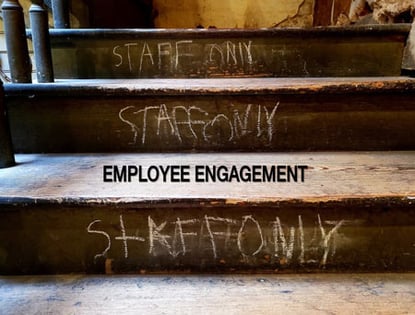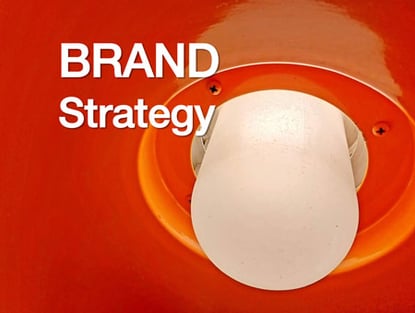What are basic brand strategy moves to quickly take an older brand into today's market?
An “Inside the Executive Suite” article from Armada Corporate Intelligence looked at this brand strategy question last month. They evaluated the options for the band Depeche Mode. The group is making a "comeback" and incorporated a variety of brand strategy approaches to freshen its brand.
An Old Brand Is Just an Old Brand - Until to You Do Something New with It - via Armada Corporate Intelligence
Depeche Mode, a 1980s and 90s alternative band, is discussing a new record and tour. The group, known for hits such as, "People Are People," "Personal Jesus," and "Enjoy the Silence," announced its newest record, "Spirit," six months in advance along with a twenty-one country tour during mid-2017.
Depeche Mode has remained active since its biggest hits decades ago. This week's announcement, however, seems to represent a new push to return to greater prominence.
What makes an old product new again?
We raised the question yesterday of how brands rekindle, dust off, improve, innovate upon, and reintroduce themselves to the market. The Depeche Mode update involves multiple brand strategies:
- Involving a new producer and tech music luminaries
- Putting the brand into new formats
- Ramping up promotional elements
- Playing up pure nostalgia
If you have a long-standing brand needing a boost to reach its previous heights, what are your options for bringing it back to the market in a way that attracts attention, engages existing and new audiences, and delivers improved business results?
Evaluating Your Brand Update Options
Using possibilities suggested in the Depeche Mode story plus a few others, we identified (and labeled) six potential brand update strategies for long-standing brands to undertake enhancements. These include:
Pure Nostalgia - In this strategy, everything essentially remains the same with the original brand. The brand’s promise (what it delivers to customers), elements (what makes up the brand), and experience (what happens for customers as they use the brand) to remain relatively unchanged. The brand attraction is dependent on audiences having positive (and likely intense) memories of the brand from an earlier, more prominent time. There may be a significant marketing push for the brand, but it constitutes the main effort to return the brand to earlier prominence. (Example – A cereal or candy brand marketing itself as a brand you remember from childhood)
Reintroduction - This strategic option involves updating the brand promise, elements, and experience to reflect current capabilities, knowledge, and market realities. Elements of the old brand may be eliminated and replaced with different aspects than the brand originally possessed. While certain brand elements are distinctly different and reflect today's situation, a strong connection remains to the brand’s earlier days to create clear linkage. (Example - Bringing back current actors to play Colonel Sanders for KFC)
Refresh - Within a brand refresh strategy, the objective is to focus on a brand’s strongest elements - the things making it most distinctive and valuable to the primary audience - and preserve them. Any brand aspects that are outdated or lacking in some way are replaced with distinctly new elements reflecting a contemporary look, feel, and sensibilities. (Example - Pokémon GO, moving a familiar brand into mobile gaming and augmented reality)
Reformulation - In this brand update scenario, a brand retains its name and perhaps a few very important core elements. Everything else is completely redesigned and modernized. The underlying expectation is to call to mind the old brand among loyal audience members while relying on modern features to fuel new growth and success. (Example - The "new" Yankee Stadium replacing the old, historic ballpark)
Promotional Reintroduction – Even when a brand promise is largely intact and all aspects of the brand are strong, it may need an extra something to maximize its impact in a new way. That is when a promotion-based brand update strategy comes into play. The objective here is using a short-term change in the brand (or attaching something new to the brand) to generate interest and attention. After some finite period, the brand change or addition is reversed. (Example - Coca-Cola adding personal names to its cans and bottles for the summer)
(Re)Launch - This brand update strategy involves keeping the brand largely intact as it has always been. The major change involves inserting the brand into new channels, locations, or markets. It could also involve returning to current channels, locations, or markets where the brand was previously active but withdrew or minimized its presence. (Example - A restaurant chain that enters and exits a particular market, only to re-enter the market at a future time)
A couple of notes about these strategies:
- These options are not mutually exclusive. They likely benefit, in fact, from smart, strategic combinations.
- We selected the labels based on how we’ve seen these described and deployed, so you may see them labeled differently elsewhere
Against this backdrop of potential strategies, we recommend conducting an exercise to identify a comprehensive list of everything closely associated with your brand. Beyond listing anything tied to the brand promise, elements, and experience, include language, customer perceptions (positive and negative, quantitative and qualitative), images, and any other sensory cues related to the brand.
After identifying a robust list of brand-related aspects, assemble a group of people from throughout your organization with strong insights into the brand. Have the group individually and collectively make their best assessments of whether each brand item is:
- Critical to defining the brand
- Important to the brand, but open to modification or significant change
- No longer relevant for the brand
While it is ideal to have quantitative market research to incorporate into this type of brand assessment, a diverse group can generally make a strong first pass evaluation of where you have room to modify your brand. As you develop a point of view on where your brand is ripe for change, review the brand update strategy options list. Choose one or multiple strategies that might make sense for updating your brand.
Does your brand need a refresh?
Beyond this article, let us know if you want to talk further about updating a brand. With many organizations currently preparing next year’s strategies, it is a great time to perform a brand check to determine if it is time for something new.





